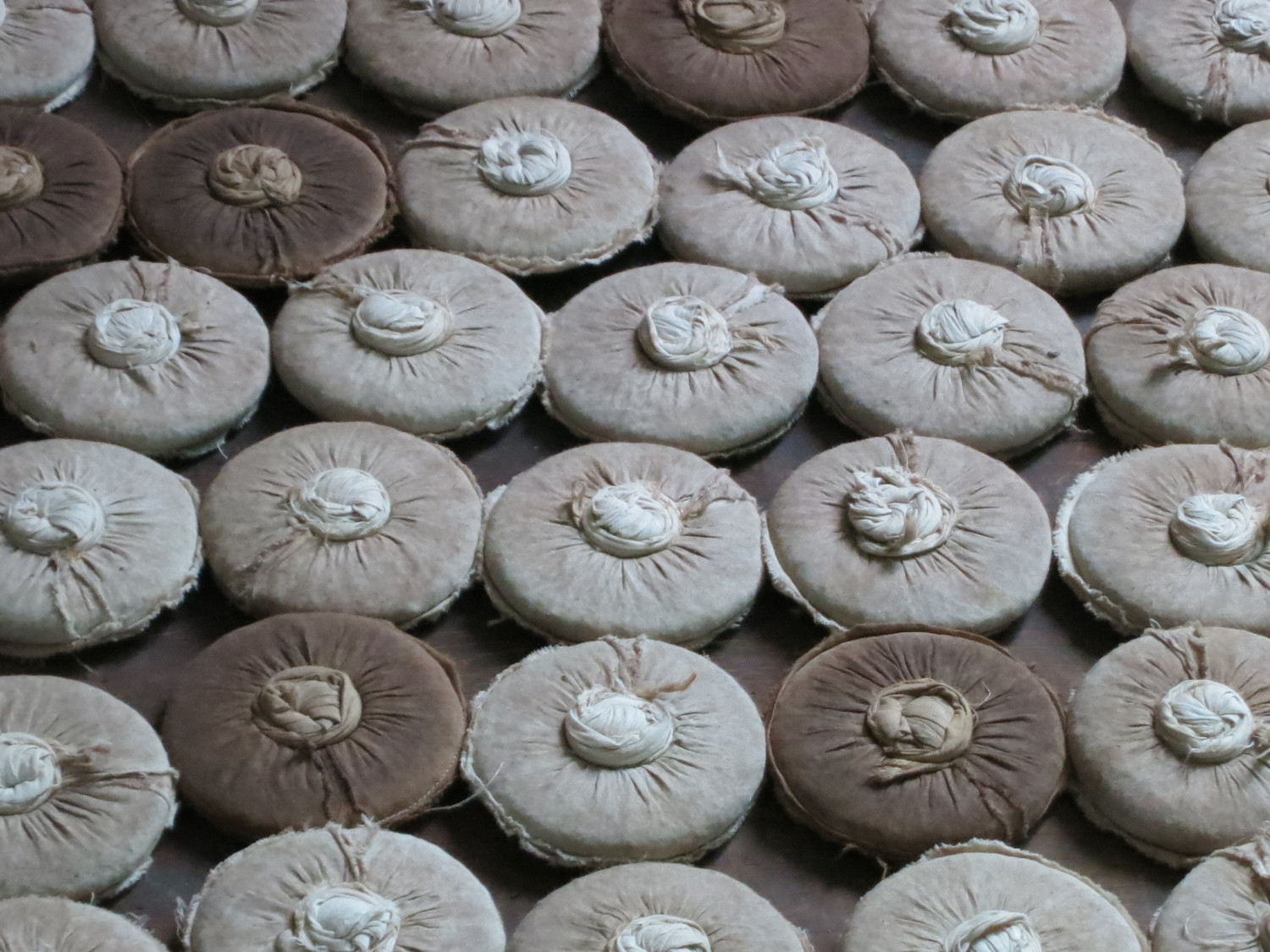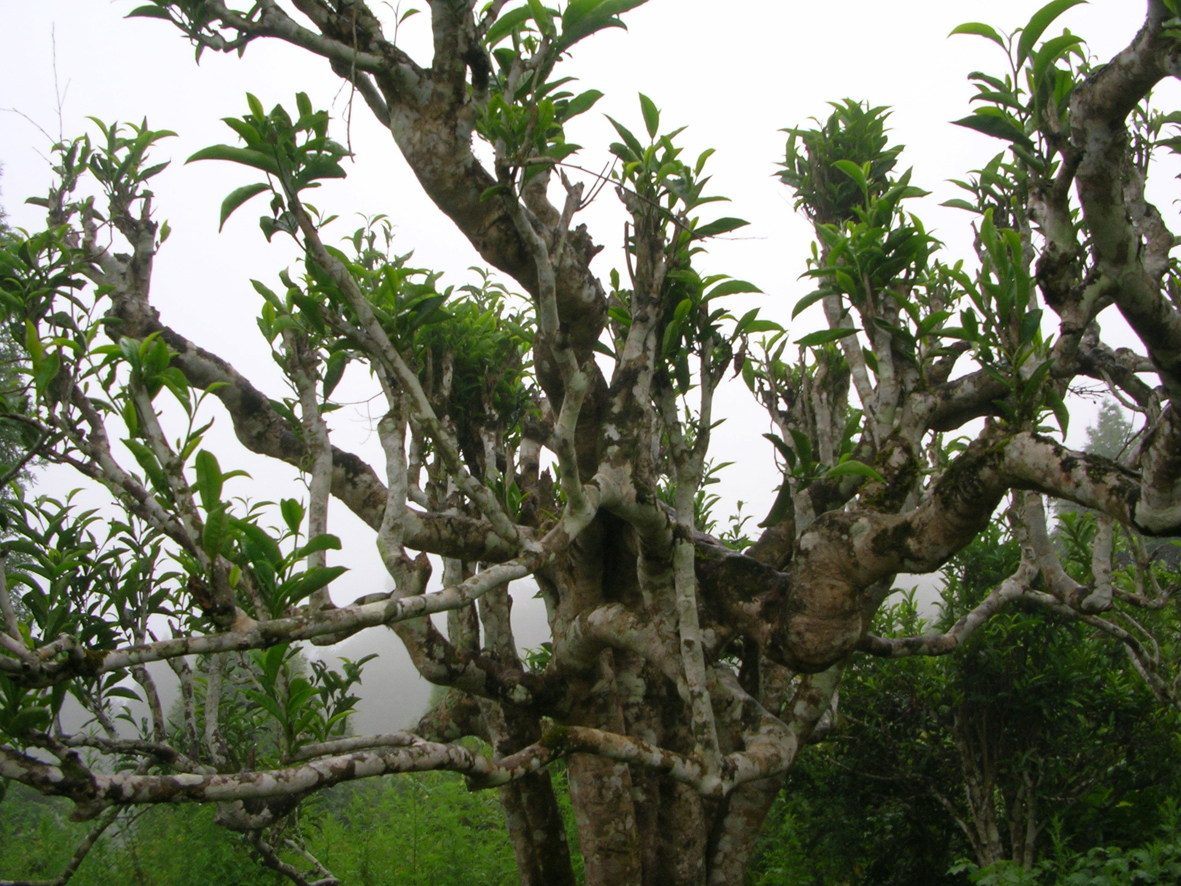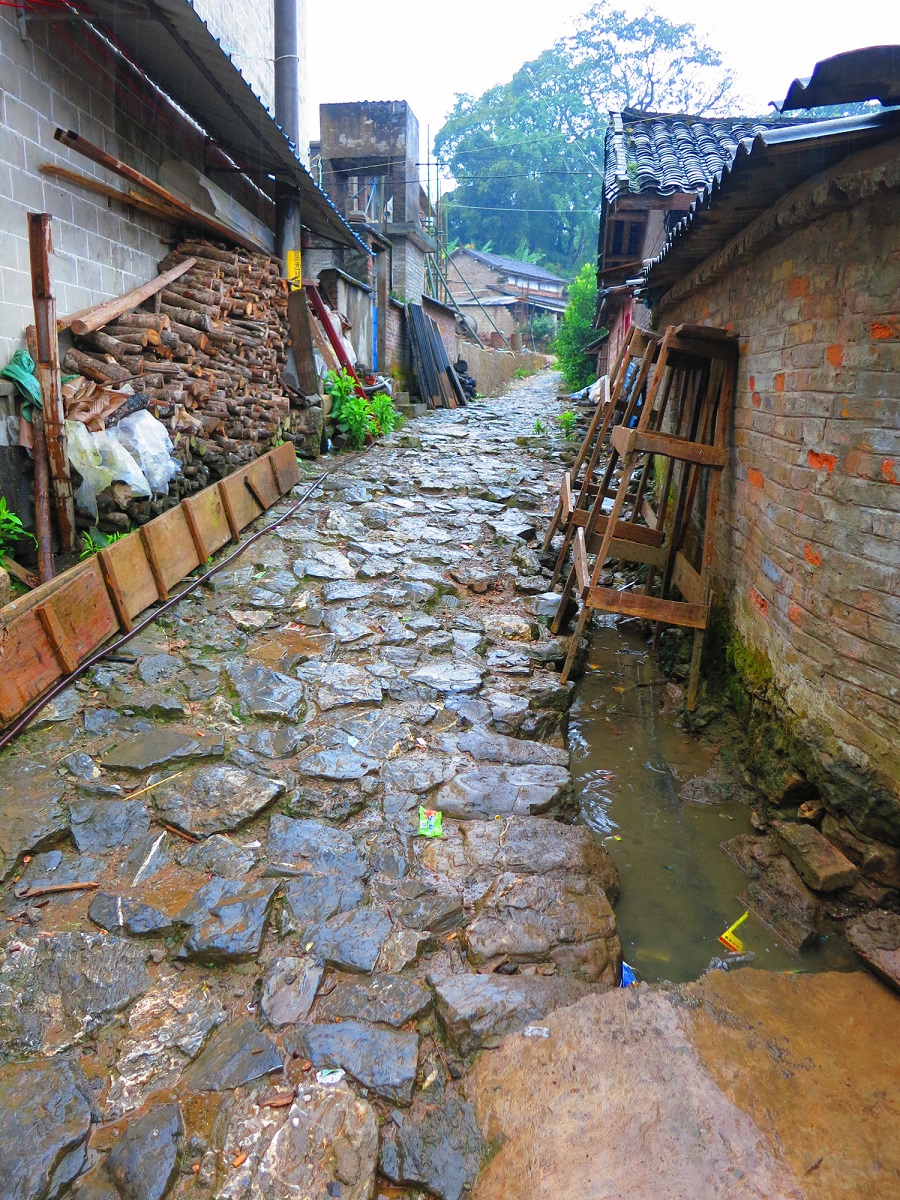China Pu-erh Tea
Pu-erh Tea
Time for a cup of Pu-erh tea in China?
The Pu-erh Tea trees
Dating back to the Cenozoic period of about 65 million years ago, the Pu-erh tea trees are possibly the oldest tea trees in China and even the world.
The Chinese Pu-erh tea trees are growing in the subtropical zones in the South China provinces. They are also found in northern Vietnam, Burma, Thailand and India. However, they grow best in the moist valleys between the elevations of 1200-1400m above sea level, primarily in the forest in the South Yunnan Province of China.
The trees are an evergreen woody plant growing as trees in arbors or as bushes. The bushes are mostly cultivated but trees can grow up to 5 to 15 meters tall with a diameter of over 1 meter. The leaves measure 4 – 15cm. Because of tis leaf size they also called "big leave tea trees" in comparison with smaller leaved trees and bushes.
The oldest tea tree (No.01) found in the wilderness in Yunnan is 2700yrs old, located in Qianjiazhai, Zhenyuan. It was discovered in 1991 and measures 25m tall and 1m in diameter. It was awarded the "oldest tea tree". The surrounding area is dominated by other old tea trees.
The ancient China tea expert, Lu Yu, in his "the Book of Tea" published some 1100yrs ago, stated that "…in the southwest China, there are tea trees with large trunks encircled by two adults hand in hand".
>> 4 Days China Tea Tour to Birthplace of Puer Tea

How is Chinese Pu-erh Tea made
Step 01: Withering: high temperature processing of the fresh leaves to get rid of the water inside.
Step 02: Rolling: softened leaves are rolled into cords;
Step 03: Drying: exposure to the sun light;
Step 04: Grading: manually select the leaves for the different grades of tea;
Step 05: Molding: steam process to soften the tea leaves and use different molds to shape the tea into various shapes (discs, bricks, and etc);
Step 06: Airing; this stops the steaming process and allows the tea to cool.
Another process was introduced in 1973 from a Guangdong oolong tea Company. It is called Piles Fermentation. This process is added between Step 04 and 05. In this process, the steamed tea leaves after grading are put in indoors areas. Yeasts and other moulds are added, sprayed with water and then covered with a tarpaulin to facilitate the oxidation and begin the fermentation of the yeasts. Tea processed this way is referred to as the "Ripe Pu-erh", in contrast to the "Raw Pu-erh" made with traditional technique.
Different types of Pu-erh tea trees in China
Big Leaves (28-50 sq cm) are primarily grown in Menghai area. These tree leaves gives your mouth a trace of bitterness, a lingering characteristic taste and increased salivation. Tea colors are gray, white or black. The raw tea liquor is a light yellow and the ripe tea is a golden color. Transparency and luster are the two criteria in judging the quality.
Mid size tea leaves (14 -28 sq cm): grown in Jingmai Mountain, it is further divided into Mangjing and Jingmai Dazhai. Mangjing carries a nectar taste, low bitterness, mid sharpness and increased production of saliva. Jingmai Dazhai tastes slightly sweet with low bitterness, sharpness and saliva generating effects.
Small leaves (under 14 sq cm): sparsely distributed in Menghai, Mangzhi and Yibang. These types of Pu'er leaves are found on the old tea trees. Taste carries a tint of orchid flower and is quite rich in flavor. Traces of sweetness added to the fullness of the tea liquor with very low bitterness and a mild sharpness. The saliva producing effect is long lasting. However, in comparison to the midsize or big leaves after 7 to 8 steepings the flavor will markedly diminish.

Pu-erh history:
The origin of Chinese Pu'er tea tree/bushes is a constantly fought battle between India (or other South Asia countries) and China. From the Chinese historical records, in the Western Zhou Dynasty, the locals in Yunnan made tea for the King Wu though the name Pu-erh did not come until later.
In the Tang Dynasty (618-970), the Pu-erh tea was widely farmed and processed in Yunnan. It became an important daily necessity in many parts of China, where vegetables were in short supply. It was at this time that the famous Tea Horse Road started.
The Chinese Central Government used the tea to trade for war horses in Sichuan, Gansu and Qinghai provinces. Unfair trading, giving less tea for more horses, was one of the strategies used by the central government to control the Tibetan and other nomadic tribes roaming the central kingdom.
In the Qing Dynasty, the last dynasty of China (1644-1912), the Pu-erh name came into being from the name of the production place. "Pu-erh tea became an important name under the heaven…the tea mountain spanned eight hundred li (2 li in 1km). the participants number amounts to a few 10,000s. traders collected and ordered and had them shipped to various places".
Pu-erh tea became the tribute tea to the royal family and a national gift for foreign envoys. The last emperor said "Drink Longjing green tea in the summer and Pu-erh in the winter". So it became a very popular drink for the government officials in Beijing.

From another book published in 1920s (by Cai E), "Chinese Pu-erh tea gives a thick taste while carrying temperate nature. Those produced in Yiwu and Yibang mountains are especially good. Top quality tea can fetch twice the price of gold". It was at this time that counterfeit tea came into being and remains until this day.
Health benefits of Chinese tea Pu-erh have been spoken of for thousands of years but only since 2005 can these benefits can now be scientifically validated. The British medical publication The Lancet has a section on Pu-erh tea.
In its First Tea Report the Tea Research and Extension Station in Taiwan states that Pu-erh tea assists with weight management and the lowering of "bad" cholesterol levels. It is thought this action would have a concomitant effect upon cardio-vascular health. In the same report increased antioxidant activity was noted in relation to Pu-erh tea consumption. Antioxidants scavenge and destroy free radicals. It is free radicals that cause cell damage within the body. Again, it is thought that this action of the Pu-erh tea would result in optimized health.
Between 1949 and 1975, the government not only did not pay attention to the Pu-erh tea, but destroyed hundreds of acres of old tea tree farms, especially during the Cultural Revolution of 1966-1976. After 1975 tea farming started to resume.
After 2000 Pu-erh tea has been resuming its glory as one of the top teas in China.


